Products Resources
Products Resources
FT-NIR analyzer
ABB's MB3600-PH FT-NIR analyzer is designed for QA–QC, research and development, raw materials identification and qualification, NIR method development, and at-line PAT applications. According to the company, the benchtop analyzer can be fitted with various accessories for measurements in pharmaceutical and life science applications. ABB, Quebec, Canada;
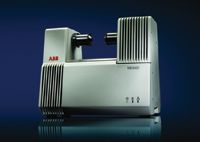
Imaging spectrograph and scanning monochromator
The SureSpectrum imaging spectrograph and scanning monochromator from Bruker Optics features a triple grating turret, standard motorized slits, and dual exit ports. The instrument is available in 250-mm and 500-mm focal lengths. Bruker Optics, Inc., Billerica, MA;
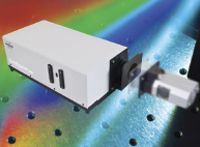
Validation software
Clarmon Corporation's QAvalid 2.0 software with Excel support is designed for spreadsheet control to mitigate business and compliance risks. Users reportedly can create and manage validation records and control Excel templates or workbooks and meet GxP and 21 CFR Part 11 compliance. According to the company, the software supports electronic signatures and enables users to perform electronic execution of spreadsheets in the Excel environment. Clarmon Corporation, London, UK;

DPSS laser
Cobolt's Zouk CW DPSS laser is designed for UV-range applications. The 355-nm laser reportedly has an output power of 10 mW and a TEM00 beam. According to the company, the laser is an alternative to the Ar/Kr-ion UV lines, quasi-CW UV lasers, and diode lasers for applications such as fluorescence-based bioanalysis, semiconductor inspection, Raman spectroscopy, and microlithography. Cobolt AB, Stockholm, Sweden;
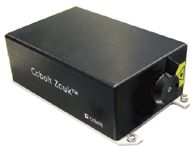
Spectrophotometer calibration standards
Hellma's liquid filter calibration standards are designed for instrument calibration according to national and international standards. Applications include checking for stray light and checking the spectral resolution and photometric accuracy. The filters are made with calibration solutions sealed in Suprasil quartz cells with a 10-mm light path and are available in sets and as individual standards. Hellma USA, Inc., Plainview, NY;

Optical fiber
j-Ultrasol solarization-resistant optical fiber from j-fiber is designed for use in < 400-nm wavelength operations in spectroscopy, medical, and industrial applications. According to the company, the optical fiber provides a 93% short-term transmission stability for up to a 2-h UV exposure and an 86% long-term transmission stability for up to 1500 h. j-fiber GmbH, Jena, Germany;

Mercury analyzer
The model RA-3000 Gold+AFS mercury analyzer from Nippon Instruments is designed for EPA Method 1631E. According to the company, the analyzer simplifies low- to sub-parts-per-million mercury analysis and reduces reagent consumption and wastes. Nippon Instruments North America, College Station, TX;
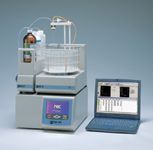
Raman microscope
Renishaw's inVia Raman microscope is a research-grade instrument designed for automated Raman spectroscopy applications. The instrument reportedly provides remote system diagnosis and control of functions such as laser wavelength, viewing modes, and system optimization; measurement templates for nonexpert users; and the ability to queue multiple measurements. Renishaw, Hoffman Estates, IL;

EDXRF spectrometer
Rigaku's NEX CG energy dispersive X-ray fluorescence spectrometer is designed for rapid qualitative and quantitative determination of major and minor atomic elements in various sample types with minimal standards. The spectrometer reportedly can analyze elements ranging from 11Na to 92U in solids, liquids, powders, and thin films. According to the company, the instrument's software enables semiquantitative analysis of most sample types without standards and quantitative analysis with standards. Applied Rigaku Technologies, Inc., Austin, TX;

UV–vis spectrophotometer
Shimadzu Scientific Instruments' BioSpec-nano UV–vis spectrophotometer is designed for the quantitation of nucleic acids. The instrument reportedly requires a sample volume of 1 μL, for a pathlength of 0.2 mm, or 2 μL, for a pathlength of 0.7 mm. The sample is pipetted onto the instrument's measurement plate. According to the company, sample measurement time is 3 s. The instrument includes dedicated software for operational functions. Shimadzu Scientific Instruments, Columbia, MD;
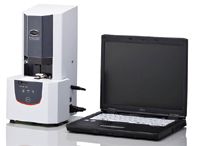
Concave-grating spectrometers
The BLACK-Comet spectrometers from StellarNet use a holographic aberration-corrected concave grating for UV–vis and UVN measurements. According to the company, the instruments' spectrograph contains no mirrors to minimize stray light while projecting a flat field to the detector array. The SR model includes a dual blaze grating that reportedly provides high efficiency for UV and NIR wavelengths. The spectrometers are housed in extruded aluminum enclosures, and SpectraWiz software and OEM drivers and customizable programs for LabView and Excel-VBA are included. StellarNet, Inc., Tampa, FL;

Mercury analysis application note
Teledyne Leeman Labs has released an application note on the analysis of mercury in cosmetics using the company's Hydra-C direct mercury analyzer. According to the note, the analysis requires 5–10 min and eliminates the need for chemical digestion. The note describes the analyzer's ability to analyze mercury in cosmetics without sample pretreatment or production of hazardous chemical waste. Teledyne Leeman Labs, Hudson, NH;
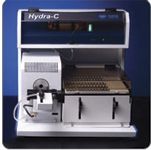
Raman spectroscopy software
OMNIC Specta software from Thermo Fisher Scientific is designed for use by nonspecialists in Raman applications such as QA–QC in the pharmaceutical and polymer industries. The software includes data presentation features for multicomponent searching and one-step materials identification. Thermo Fisher Scientific, Waltham, MA;
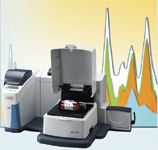
Temperature controller
The HTC Series Precision temperature controller from Wavelength Electronics is designed to provide temperature stability and reduced internal voltage drop for improved operating efficiency. According to the company, the controller's short-term off-ambient stability is 0.0009 °C and its long-term off-ambient stability is 0.0015 °C. Wavelength Electronics, Inc., Bozeman, MT;
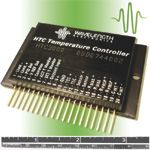
Integrating sphere with light source
Avantes' AvaSphere-50-LS-HAL integrating sphere with an internal halogen light source can be used for reflection measurements with diffuse halogen light as illumination. It is designed to be used with the company's AvaSpec spectrometers. According to the company, the internal light source provides 160 times more light on the sample than with an integrating sphere with an external fiber-coupled light source. The device has an internal diameter of 50 mm, a sample port diameter of 10 mm, and an SMA terminated reference port. The 5-W halogen lamp is stabilized and cooled with forced air flow. A 24-V, 1.25-A power supply is included. Avantes, Inc., Broomfield, CO;
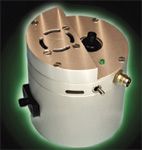
Raman microscope
The μSense-I Raman microscope from Enwave is designed for nonconfocal microscopic Raman applications in academic, industrial, and research laboratories. The microscope reportedly provides a spectral resolution of -6 cm–1, a spectral range of ~250–2350 nm, and spatial resolution of better than 5 μm. The instrument's Raman unit can be detached from the microscope and used as a portable instrument. Enwave Optronics, Inc., Irvine, CA;
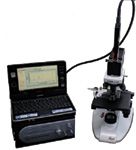
AA spectrophotometers
The AA-7000 Series atomic absorption spectrophotometers from Shimadzu are designed with a 3-D optical system for flame and furnace analysis. According to the company, the instruments achieve flame detection of Pb at 0.015 ppm and furnace detection of Pb at 0.00005 ppm. The spectrophotometers combine the flame and furnace system mounts in the same compartment. Safety features include a vibration sensor that extinguishes flames automatically, a multimode automatic gas leak check, automatic air–nitrous oxide switching, and an argon gas pressure monitor. Shimadzu Scientific Instruments, Columbia, MD;

LIBS systems
Applied Spectra's RT100-Ec and RT100-Eci laser-induced breakdown spectroscopy systems are designed to provide fast, parts-per-million level elemental analyses without sample preparation. According to the company, the RT100-Ec system provides highly automated measurements and the RT100-Eci system provides the same performance in a manual mode. Applied Spectra, Inc., Fremont, CA;

Elemental and depth profile analyzer
The GD-Profiler 2 instrument from HORIBA Scientific couples a flexible RF glow discharge excitation source to optics for elemental bulk, surface, and depth profile analysis. The system, which is designed for surface and interface characterization, uses controlled sputtering of a material by a 4-mm diameter plasma and analyzes all elements including gases (N, O, H, Cl) as a function of the depth in conductive or nonconductive layers and substrates. According to the company, depth resolution can be as high as 1 nm, with a sputtering rate as fast as several micrometers per minute. HORIBA Scientific, Edison, NJ;

FT-IR spectrometer
PerkinElmer's Spectrum 65 FT-IR spectrometer is based on the company's Dynascan interferometer. According to the company, the instrument is designed for the everyday IR analyst. PerkinElmer, Inc., Shelton, CT;
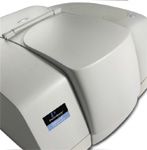
Standard solutions
Claritas single- and multielement standard solutions from SPEX CertiPrep reportedly are made with high-purity materials and are tested by ICP-MS. According to the company, every standard is supplied with a certificate of analysis that reports the actual measured values in the final solution of the major analytes and as many as 68 trace element impurities. SPEX CertiPrep, Inc., Metuchen, NJ;
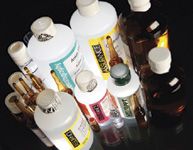
Electrical breaks and envelopes
Insulator Seal's electrical breaks and envelopes are designed to provide high voltage isolation and consist of metal tube hardware (stainless steel) brazed to either end of a ceramic tube (alumina ceramic). Nominal tube sizes range from 0.75 in. to 8 in. for standard catalog assemblies, and custom break assemblies as large as 11 in. in diameter and 4 ft in length are available. The standard operating temperature reportedly is 450 °C for standard catalog break assemblies, and custom assemblies are available with operating temperatures as high as 900 °C. Insulator Seal, a division of MDC Vacuum Products, LLC, Hayward, CA;
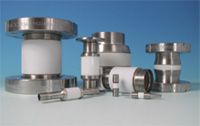
ICP accessory
The Niagara PLUS accessory is designed to double the productivity of an ICP-OES or ICP-MS instrument. The accessory reportedly eliminates most of the sample cycle overhead required for accurate analysis by combining a switching valve and flow injection feature. According to the company, the accessory reduces sample contact with consumables. Glass Expansion, Inc., Pocasset, MA;
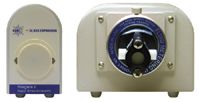
Confocal mapping FLIM system
The DynaMac fluorescence lifetime imaging microscopy system from HORIBA Scientific is a confocal mapping system designed to provide information about molecular motion, sizes, local environment, interaction, and binding with respect to microscopic locations in a sample. The standalone system reportedly includes software control of light source, camera, pinholes, and filters. HORIBA Scientific, Edison, NJ;

Back-thinned CCD image sensors
The model S10141 BT-CCD image sensors from Hamamatsu are designed for spectroscopy and detecting weak light signals throughout the 200–1100 nm wavelength range. The sensors' back-thinned structure reportedly produces high quantum efficiency with a maximum sensitivity at 660 nm. According to the company, the readout noise is 4 electrons rms and a built-in thermoelectric cooler reduces noise. The sensors are available in six formats ranging from 1024 × 122 pixels to 2048 × 506 pixels, with a pixel size of 12 μm × 12 μm. Hamamatsu Corporation, Bridgewater, NJ;
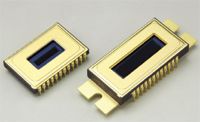
ATR accessory
The GladiATR Vision attenuated total reflection device is designed to couple small-area infrared analysis with simultaneous viewing. According to the company, the device's diamond crystal enables analysis of thick or nontransparent samples. The accessory reportedly is compatible with most FT-IR spectrometers. Pike Technologies, Madison, WI;
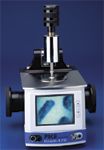
Fluorescence spectrophotometer
The model F-2700 fluorescence spectrophotometer from Hitachi High Technologies America is available in stand-alone and PC-controlled configurations. The instrument reportedly features a signal-to-noise ratio of 800 rms for the Raman band of water at a 5-nm bandwidth. According to the company, with PC control the scan speed is as high as 12,000 nm/min, which makes the spectrophotometer useful for 3-D scan measurements. Accessories available for the instrument include automatic sampling, quantum yield measurement, spectral correction, and a 100-μL microcell. Hitachi High Technologies America, Inc., Pleasanton, CA;
www.hitachi-hta.com/spectroscopy
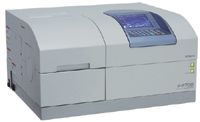
Wire-grid polarizer
The Ultra BroadBand (UBB01A) wire-grid polarizer from Moxtek is designed for use at wavelengths ranging from 250 nm (UV) to 4500 nm (IR). According to the company, wire-grid polarizers have advantages in the use of wide acceptance angles and higher energy capacity when compared with other polarizers. Applications include UV–vis and FT-IR spectroscopy, UV exposure, IR imaging, communications, astronomy, and other fields that use imaging or nonimaging polarimetry. Moxtek, Inc., Orem, UT;
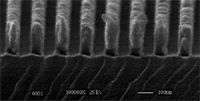
LIBS instruments
Laser-induced breakdown spectroscopy (LIBS) instruments from AnaLIBS are designed for qualitative and quantitative determinations of components present in samples such as active pharmaceutical ingredients, lubricant, excipients, and contaminants. Applications include environmental analysis, pharmaceutical analysis, metallurgy, gemology, public security, mining, and petroleum exploration. The instruments can be used for validated methods in collaboration with the FDA. AnaLIBS, Boucherville, Quebec, Canada;
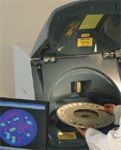
Fiber-optic sample compartment
Quantum Northwest's qpod sample compartment provides temperature control for fiber-optic spectroscopy. A cuvette holder in the center provides Peltier-based temperature control from –30 °C to 105 °C. The holder has magnetic stirring and a dry gas purge. Fiber-optic cables are attached to fused-silica lens systems and are inserted from the sides. Kits are available for absorbance, fluorescence, and multipurpose for both. Quantum Northwest, Inc., Shoreline, WA;

Vertical diode laser stacks
Quasi-continuous-wave (QCW) high-power vertical diode laser stacked arrays from DILAS reportedly are available in wavelengths ranging from 808 nm to 9xx nm with power ranges up to 300 W QCW per bar with optional fast-axis collimation. The AuSn soldered vertical stacks are designed for operation at high temperatures in applications such as diode pump solid-state laser and defense requiring QCW lasers in the kilowatt power range. The conduction-cooled stacks are available in one-bar, seven-bar, and eight-bar configurations. DILAS, Mainz, Germany;
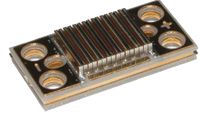
Pyroelectric detectors
Pyroelectric detectors from Microwatt Applications include detectors for use with FT-IR and with NDIR. The MWA 5500 series detectors, for use with FT-IR, are single element DLATGS detectors with spectral sensitivity ranging from the UV to 1000 μm. The MWA 4000 series detectors, for use with NDIR, are single-element permanently poled lithium tantalate detectors that can be operated from 1 Hz to 100 Hz. Microwatt Applications, Boynton Beach, FL;

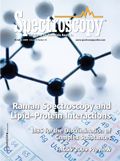
LIBS Illuminates the Hidden Health Risks of Indoor Welding and Soldering
April 23rd 2025A new dual-spectroscopy approach reveals real-time pollution threats in indoor workspaces. Chinese researchers have pioneered the use of laser-induced breakdown spectroscopy (LIBS) and aerosol mass spectrometry to uncover and monitor harmful heavy metal and dust emissions from soldering and welding in real-time. These complementary tools offer a fast, accurate means to evaluate air quality threats in industrial and indoor environments—where people spend most of their time.
NIR Spectroscopy Explored as Sustainable Approach to Detecting Bovine Mastitis
April 23rd 2025A new study published in Applied Food Research demonstrates that near-infrared spectroscopy (NIRS) can effectively detect subclinical bovine mastitis in milk, offering a fast, non-invasive method to guide targeted antibiotic treatment and support sustainable dairy practices.
Smarter Sensors, Cleaner Earth Using AI and IoT for Pollution Monitoring
April 22nd 2025A global research team has detailed how smart sensors, artificial intelligence (AI), machine learning, and Internet of Things (IoT) technologies are transforming the detection and management of environmental pollutants. Their comprehensive review highlights how spectroscopy and sensor networks are now key tools in real-time pollution tracking.